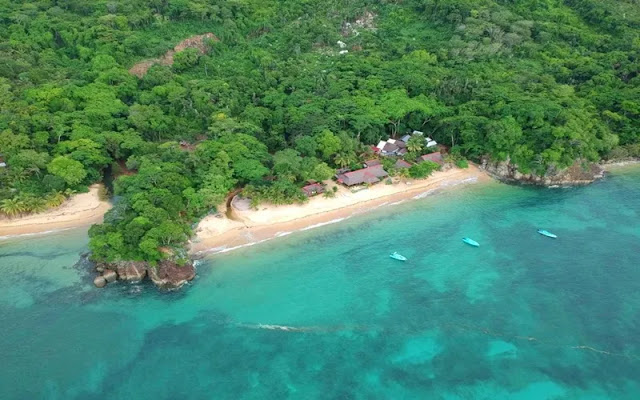After the rugged adventure in Ankarana, the thought of Nosy Be’s sandy shores and warm, turquoise waters was like a siren's call. The journey to Nosy Be from Ankarana was as much an adventure in itself as the park I had just left behind. From the reserve, I made my way back toward the coastal town of Ankify, the gateway to the island, passing through varied landscapes along the way. The once-dusty, barren earth transitioned into a denser green, the environment softening as I approached the coast.
Arriving at Ankify, the
scene quickly shifted from Ankarana’s craggy, tsingy formations to the lush,
tropical serenity of the coastline. I boarded a boat for a short ride across
the stunningly clear waters, the horizon framed by Nosy Be's distant, mountainous
silhouette. The sea breeze and the rhythmic lap of waves against the boat felt
like a welcome reprieve, a soft contrast to the raw, demanding landscapes I’d
just left behind. As I felt the sun warm my skin, it was a different kind of
heat than the sweltering humidity of the mainland; it was gentler, almost
indulgent, as if my body instinctively knew it was heading into a slower, more
peaceful pace.
Nosy Be was everything I imagined and more. As soon as I stepped onto the island, the smell of the ylang-ylang flowers filled the air, a fragrance I had encountered in essential oils and perfumery. It is also sometimes mixed with coconut oil to create a cream traditionally used to shield against UV rays and to combat fever.
The island’s slow pace was immediately apparent, something I have yearned for to ease out of the rigorous pace I have kept while exploring the main island. I went to one of the quiet beaches, where the fine sand felt like powder beneath my feet. The water was impossibly clear, stretching into shades of blue and turquoise. It was paradise.
I couldn’t resist a dip in the warm water. The vibrant coral reefs off the coast were spectacular, with colourful fish darting between the swaying corals. Nosy Be has a reputation as a diving and snorkelling haven, thanks largely to its location in the northern Mozambique Channel, an area well known for being home to the second most diverse coral populations in the world.
The highlight of my time on Nosy Be was a hike up Mont Passot, the island’s highest point. The view from the summit was sublime, with panoramic vistas of the surrounding islands and the deep blue sea dotted with sailing boats as it stretched endlessly in every direction. From this height, I could also spot some of the island’s crater lakes, such as Lac Amparihibe, Lac Anjavibe, and Lac Antsidihy, all formed from ancient volcanic activity. These lakes are sacred to the community, and as such, swimming is not permitted.
As the largest island, Nosy Be is part of an archipelago surrounded by smaller islands. Together, they are home to a wide range of wildlife, including various lemur species such as the black lemur and the blue-eyed spotted lemur, boa constrictors, and Madagascar fish eagles, as well as humpback whales, sharks, dolphins, and sea turtles.
But exploration to see
any of these creatures will have to wait. It’s time to wind down and sample
some of the local cuisine. French and Creole influences blend nicely with
Malagasy and Southeast Asian flavours; no matter what, the staple rice is
guaranteed to appear.










No comments:
Post a Comment
It's so good to see you here . . .